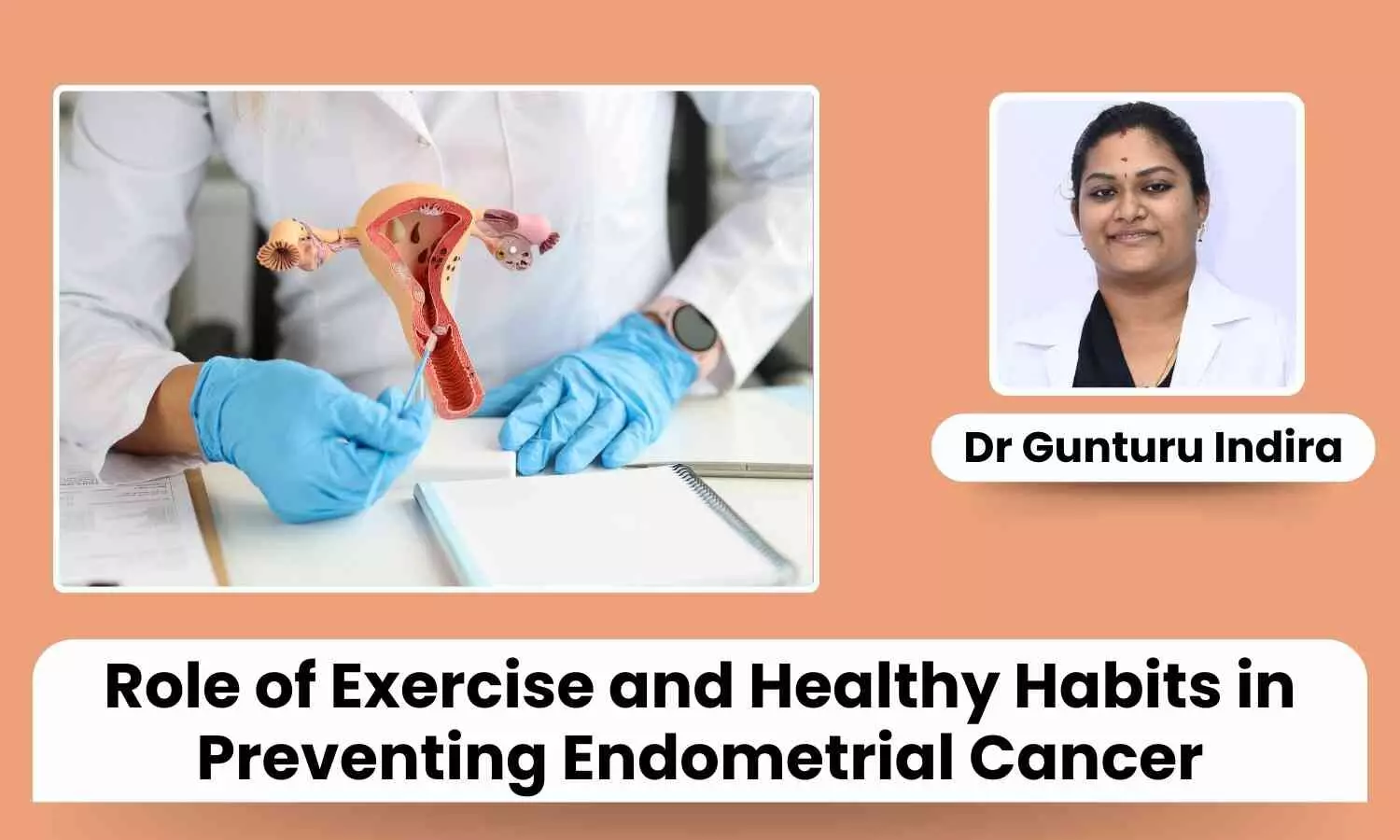How Physical Activity and Lifestyle Choices Can Reduce the Risk of Endometrial Cancer - Dr Gunturu Indira

As we navigate the complexities of modern life, it's becoming increasingly clear that our lifestyle choices play a significant role in shaping our overall health and wellbeing.
One crucial aspect of this is physical activity, which has been consistently linked to a reduced risk of various chronic diseases, including certain types of cancer, one of these being Endometrial cancer.
Endometrial cancer primarily affects women in their postmenopausal years, with 75-80% of cases diagnosed between ages 50 and 70. However, it can also occur in younger women.
Endometrial Cancer
Endometrial cancer, also known as uterine cancer, affects the lining of the uterus and is the most common type of gynaecological cancer. Obesity, weight gain, hormone imbalance, diabetes, endometrial hyperplasia, estrogen and family history are established risk factors.
However, research suggests that exercise can significantly reduce the likelihood of developing endometrial cancer, particularly in postmenopausal women.
How Physical Activity Reduces Risk
Studies have consistently shown that regular exercise lowers the risk of endometrial cancer by up to 30-40%. This is attributed to several factors, including exercise's role in regulating hormones, improving insulin sensitivity, and reducing body fat. Physical activity also helps mitigate inflammation, which is a known contributor to cancer development.
Importance of Exercise
Regular physical activity plays a crucial role in regulating hormone levels, particularly estrogen. Research suggests that moderate-intensity physical activity yields significant benefits.
Aim for at least 150 minutes of moderate-intensity aerobic exercise, such as brisk walking, cycling, or swimming, or 75 minutes of vigorous-intensity aerobic exercise per week.
Additionally, incorporating strength training into your routine, 2-3 times a week, targeting major muscle groups, can enhance insulin sensitivity and hormone regulation, thereby reducing risk of estrogen driven cancer growth.
Healthy Weight Management
Obesity increases endometrial cancer risk. Aim for a BMI between 18.5 and 24.9 through a combination of diet and exercise.
Balanced Diet
Focus on whole foods, fruits, vegetables, and whole grains. Include foods rich in omega-3 fatty acids, antioxidants, and fibre, such as salmon, berries, leafy greens, legumes, whole grains and vitamin C rich foods like amla & and other citrus fruits.
Stress Management and Sleep
Engage in stress-reducing activities like yoga, meditation, or deep breathing exercises. Ensure 7-8 hours of sleep per night to regulate hormones and repair cells.
Limiting Estrogen Exposure and Harmful Habits
Avoid excessive estrogen exposure through hormone replacement therapy (HRT) and birth control pills, unless medically necessary. Limit alcohol consumption and refrain from smoking, as both increase cancer risk.
Regular Health Check-Ups and Genetic Screening
Monitor blood pressure, blood sugar levels, and hormone levels regularly visit gynaecologist or physician in case of abnormal vaginal bleeding, as it is the most common presentation of precancerous lesions of endometriosis.
Treatment of precancerous disorders of endometrium will lower the risk of endometrial cancer, proper treatment which may include hormonal therapy, dilatation and curettage (D&S) or hysterectomy which can prevent these precancerous lesions from becoming cancer.
Consider genetic testing for Lynch syndrome or other hereditary conditions that increase endometrial cancer risk.
Overcoming Barriers and Staying Motivated
Starting or maintaining a healthy lifestyle can be challenging, but there are strategies to overcome these barriers. To stay on track, try scheduling exercise and self-care into your daily routines, making it a non-negotiable part of your daily planner. Additionally, finding exercise buddies or support groups can provide motivation and accountability.
Exploring low-impact activities, such as yoga or Pilates, can also help make physical activity more enjoyable and accessible. Celebrating small victories and progress along the way can also help maintain momentum.
By incorporating these simple yet effective strategies, women can significantly reduce their risk of endometrial cancer. To maximize the benefits, consult with a healthcare professional to create a personalized prevention plan tailored to your unique needs and health status.
Empower Yourself Against Endometrial Cancer
While no guaranteed prevention method exists, embracing a comprehensive approach empowers individuals against this potentially life-threatening disease. Take control of your health today.
Disclaimer: The views expressed in this article are of the author and not of Health Dialogues. The Editorial/Content team of Health Dialogues has not contributed to the writing/editing/packaging of this article.


